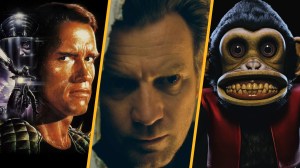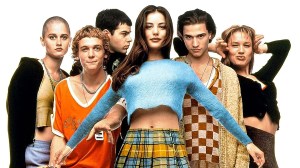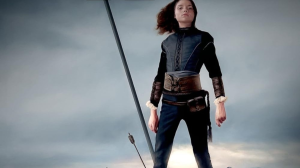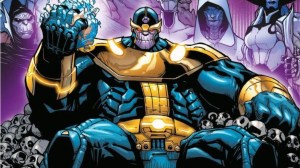Stephen King is often referred to as the “King of Horror,” but his influence on storytelling extends to many genres. Film adaptations of his work have shaped today’s approach to psychological horror, coming-of-age drama, and literary adaptation as a whole. Even beyond movies and novels, King’s world and characters have left their mark on culture itself, inspiring music, video games, comics, merchandise, theme park attractions, and an entire generation of new creators.
Videos by ComicBook.com
However, not all King adaptations are created equal. A large percentage of his overall cinematic influence actually comes from a select few titles, which is somehow even more impressive. These four films are pillars of the movie medium, visualizing King’s work in incredible ways (whether or not he thought so himself), creating iconography that is now synonymous with the novels, and laying out storytelling blueprints that future directors, actors, and screenwriters would expand on for decades.
4) Stand By Me
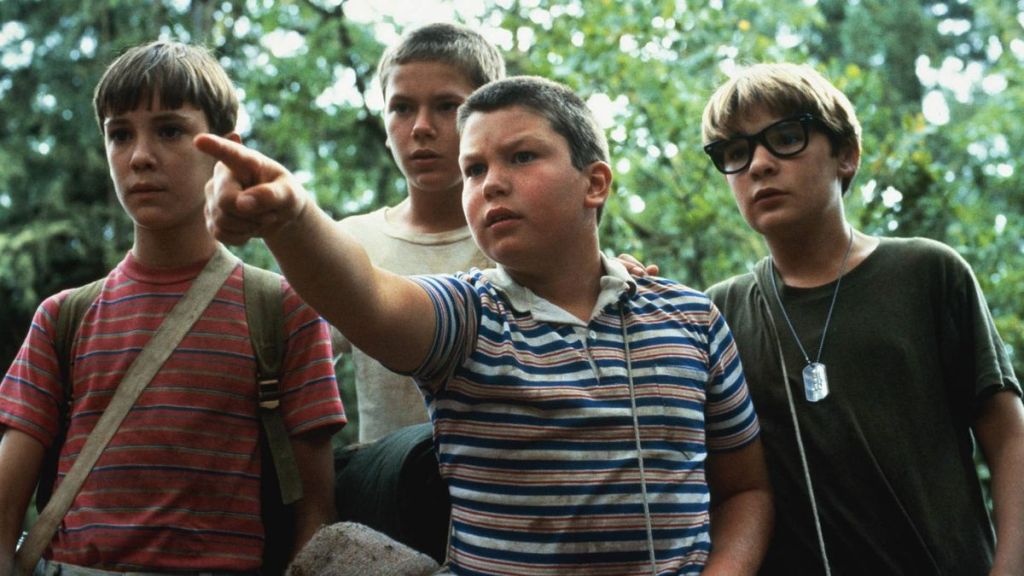
Rob Reiner’s 1986 classic Stand By Me, adapted from King’s novella The Body, has become a celebrated favorite of multiple generations of fans. It follows four boys on a journey to find the body of a missing teenager, and in doing so, manages to capture the universal intensity of childhood friendships, something that King always excels in, and that Reiner perfectly executes here. River Phoenix’s Chris Chambers and Wil Wheaton’s Gordie Lachance feel like friends you once had, while Jerry Goldsmith’s score and the nostalgic 1950s setting make it feel like a memory. The film invites you to remember the experience of childhood, even if your own memories are nothing like the ones in the movie.
Stand By Me was also influential in how it translated the hero’s journey for its young protagonists and its 1:25 runtime. Gordie departs from his ordinary world in Castlerock, guided by Chris’s insistence, and faces trials in the woods, confronting Ace Merrill and his gang. By the time Gordie reaches the body, he has undergone a rite of passage, and you, as a viewer, have undergone it with him. It was a commercial success upon release and went on to win the Adapted Screenplay Oscar. But perhaps most importantly, the story that was famously inspired by King’s own childhood went on to inspire other adolescent classics, such as The Sandlot, The Breakfast Club, and even Stranger Things.
3) The Shawshank Redemption

Frank Darabont’s The Shawshank Redemption, adapted from Stephen King’s novella Rita Hayworth and Shawshank Redemption, is consistently ranked as one of the greatest films of all time, and is still the top-rated film on IMDb, even though it came out in ‘94. The story of Andy Dufresne (Tim Robbins) being wrongly imprisoned for life embodies a fear most of us share: being trapped in an unjust system or a life we didn’t choose. Watching Andy overcome his ordeal by improving the lives of fellow inmates, outsmarting a corrupt warden, and ultimately escaping offers a near-universal catharsis. Meanwhile, Morgan Freeman’s narration permeated the cultural lexicon, and his performance made him a household name.
Initially a box office disappointment, Shawshank found its audience through home video and repeat airings on TBS and TNT. Some sources have even claimed that its TV success inspired Hollywood execs to take the medium of television more seriously. In addition, the movie broke several unwritten blockbuster “rules” of the time: it featured an all-male cast with no romantic B-plot and centered on an interracial friendship between Andy and Red. Shawshank was ultimately a character-driven drama that became an evergreen property, encouraging studios to take risks on projects that didn’t fit traditional blockbuster formulas and explore other avenues of distribution. The climactic shot of Andy emerging into the rain has been endlessly referenced in both film and TV.
2) Carrie
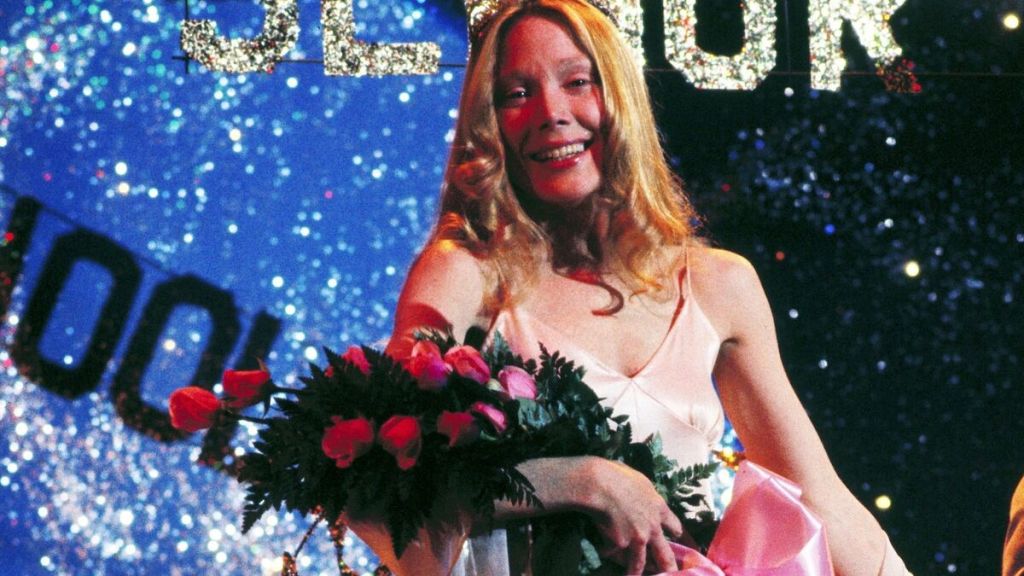
Another coming-of-age story, Brian De Palma’s Carrie is a 1976 horror classic that features one of the most memorable climaxes in film history. Sissy Spacek’s portrayal of the shy, telekinetic teen is legendary, and Piper Laurie’s performance as her religious fanatic mother adds even more psychological terror. De Palma’s stylistic direction included the use of split diopters, split-screen shots, and carefully placed close-ups; subjective cinematic techniques that would be borrowed in an onslaught of future horror films, eventually becoming the standard. Even the female-led narrative and the “bullied teen snaps” trope continue to influence contemporary horror. The prom sequence has become so culturally ingrained that most first-time viewers already know how it ends, but that doesn’t make it any less horrifying.
Under the supernatural, Carrie is about alienation, bullying, puberty, and the pressures of growing up under abuse, which are sensitive and widely relatable themes. The screenplay remained faithful to King’s novel without ever veering into exploitation territory. Ultimately, however, what Carrie did was pave the way for dozens of future King adaptations by proving his work could succeed on screen. It launched or boosted the careers of Spacek, Laurie, and several young actors, including Amy Irving and Nancy Allen, and solidified De Palma’s reputation as a top-notch director. It also helped cement King’s cultural status, laying the groundwork for the wave of adaptations that followed, including the upcoming Carrie reboot from Mike Flanagan. Without Carrie, we might not have had The Shining, Stand By Me, or The Shawshank Redemption as we know them today.
1) The Shining

Stanley Kubrick’s The Shining is arguably one of the most meticulously crafted horror films ever made, and its influence on cinema and pop culture is hard to overstate. Jack Nicholson’s Jack Torrance, Shelley Duvall’s Wendy, and the menacing presence of the Overlook Hotel haunt the minds of most horror fans. Kubrick’s direction immerses viewers in the characters’ lives so completely that you feel like you’re living (read: trapped) inside the hotel with them. His use of subjectless steadicam shots, slow zooms, and symmetrical composition makes the Overlook itself into a character.
The Shining adaptation endures half because of King’s source material, and half because of Kubrick’s obsession with atmosphere. It was a match made in heaven (or hell), even if King himself wasn’t initially happy with the result. Kubrick leaves open a chasm of ambiguity trailed with small, seemingly insignificant breadcrumbs. A choice that has inspired decades of essays, theories, and even documentaries. Themes of isolation, domestic abuse, and the fragility of sanity are timeless and well executed, with career-defining performances and technical virtuosity that set a new bar for horror. The Shining has influenced countless directors, from David Lynch to Ari Aster, nearly coining its own new subgenre of atmospheric slow-burn horror. “Here’s Johnny!,” the hallway twins, the final photograph, and even more iconography has been endlessly referenced in films, TV, video games, music, and more.
Kubrick essentially perfected what De Palma began with Carrie, demonstrating to filmmakers that horror could transcend its genre label and that King’s stories work on screen. Decades later, The Shining remains a legendary film and a mystery that horror fans continue to unravel.
Are there any underrated King movies that deserve more attention? Leave a comment below and join the conversation now in the ComicBook Forum!

